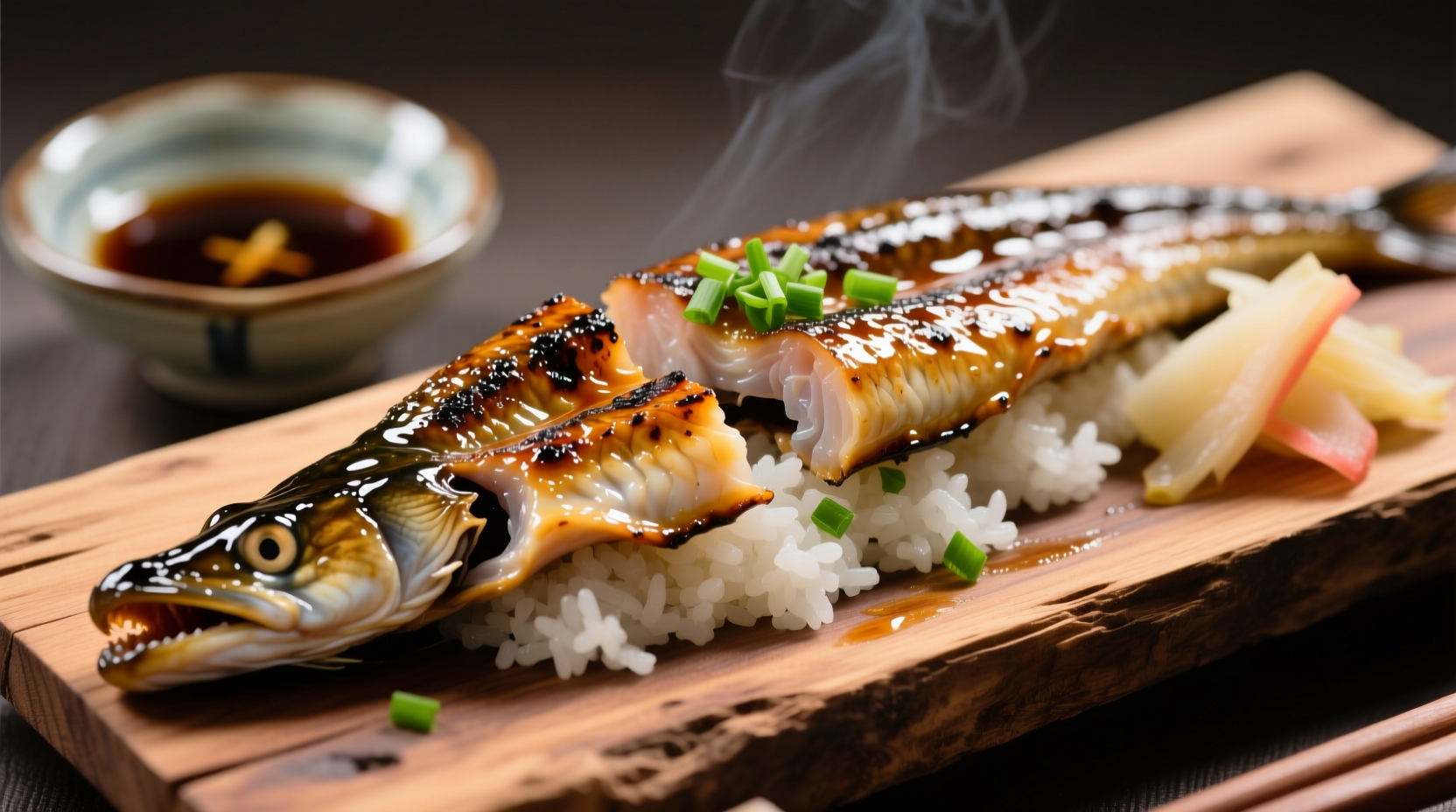Curious about trying eel but unsure what to expect? You're not alone. Many first-time eaters worry about strong fishiness or unusual textures, but properly prepared eel surprises most people with its approachable flavor profile. This guide breaks down exactly what eels taste like across different preparations and cuisines, so you can approach your first eel experience with confidence.
Understanding Eel's Core Flavor Profile
Eel's taste varies significantly based on species, habitat, and preparation method. Freshwater eels (like Japanese unagi) contain higher fat content, yielding a richer, more buttery flavor reminiscent of smoked salmon. Saltwater eels (such as anago) offer a cleaner, more delicate sweetness closer to flounder or squid. Unlike many fish, eel rarely tastes “fishy” when fresh and properly handled—its natural oils contribute to a smooth mouthfeel rather than overwhelming ocean notes.
| Eel Type | Flavor Characteristics | Texture | Common Preparations |
|---|---|---|---|
| Freshwater (Unagi) | Rich, buttery, mildly sweet | Firm yet tender, slightly chewy | Grilled with tare sauce (Japan), smoked (Europe) |
| Saltwater (Anago) | Clean, subtle ocean sweetness | Softer, more delicate | Tempura-fried (Japan), stewed (Mediterranean) |
| Processed (Smoked) | Earthy, wood-smoked notes | Firm, slightly dry | Cold-smoked (Netherlands), jellied (UK) |
How Preparation Transforms Eel's Taste
The cooking method dramatically impacts eel's final flavor. Japanese chefs masterfully balance three key elements: meticulous cleaning to remove muddy undertones, precise grilling temperature to render excess fat, and signature tare sauce (a sweet-savory reduction of soy, mirin, and sugar) that caramelizes into a glossy glaze. This process transforms potentially muddy freshwater eel into a luxurious delicacy.
European preparations often involve smoking or jellied preparations. Dutch smoked eel develops earthy, bacon-like notes through cold-smoking over beechwood, while traditional English jellied eels use vinegar brine to cut through richness. According to FAO fisheries documentation, proper bleeding and chilling within 15 minutes of capture prevents enzymatic breakdown that causes off-flavors—a critical step many home cooks overlook.

Regional Taste Variations You Should Know
Japan's unagi culture demonstrates how preparation defines perception. Tokyo-style unagi gets steamed before grilling for extra tenderness, yielding a melt-in-your-mouth texture with pronounced sweetness. Osaka-style skips steaming for a firmer bite and more intense char. Both versions use region-specific tare sauces—Kanto region's version is darker and sweeter, while Kansai's is lighter and saltier.
In Mediterranean cuisine, eel appears in Portuguese arroz de lampreia (lamprey rice) and Catalan calòf, where slow braising in tomato-based sauces creates a complex umami depth. These preparations highlight eel's versatility beyond sushi bars—its natural richness absorbs surrounding flavors while maintaining distinct character.
Texture Myths and Realities
Many fear eel will be slimy or rubbery, but properly cooked eel offers a satisfying contrast: crisp exterior from grilling with a yielding, almost buttery interior. The key lies in fat content—freshwater eel's higher fat (15-20% versus 5-8% in most fish) creates that luxurious mouthfeel. As noted in comparative seafood studies, eel's collagen structure breaks down at precise temperatures (140°F/60°C), transforming connective tissue into gelatin for optimal tenderness.
Texture pitfalls occur when eel is overcooked (becoming tough) or undercooked (retaining unwanted chewiness). Professional chefs recommend cooking eel skin-side down first to render fat, then flipping just once—a technique that prevents curling and ensures even texture.
First-Timer's Guide to Enjoying Eel
If you're new to eel, start with Japanese unagi don (grilled eel over rice)—the sweet sauce and warm rice balance any potential richness. Avoid raw preparations initially; while some high-end sushi bars serve carefully treated eel sashimi, the texture can be challenging for beginners. When ordering, ask about the eel's origin—wild-caught Japanese eel commands premium pricing but offers superior flavor to farmed alternatives.
At home, look for vacuum-sealed, pre-cooked eel in Asian markets. Simply warm in a skillet with the included sauce for an authentic taste without the complex preparation. Pair with pickled ginger to cut richness and jasmine rice to absorb the flavorful glaze—a combination that showcases why eel has remained a culinary staple for centuries.
Debunking Common Eel Taste Myths
Myth: “Eel tastes like snake or earthworms.”
Reality: While eels and snakes share biological classifications, their flavors differ completely. Properly prepared eel bears no resemblance to terrestrial animals.
Myth: “All eel tastes overwhelmingly fishy.”
Reality: Freshwater eel's fat content actually suppresses fishiness. As confirmed by aquatic flavor chemistry research, eel contains lower trimethylamine (the compound causing fishy odors) than salmon or mackerel when properly handled.
Myth: “Eel is slimy when cooked.”
Reality: The slippery coating disappears completely during cooking. Any perceived sliminess indicates improper preparation or spoiled product.
When Eel Might Not Meet Your Taste Expectations
Eel's appeal depends heavily on context. It shines in traditional preparations but may disappoint in inappropriate applications. For instance, eel doesn't work well in delicate ceviche (its richness overwhelms citrus), and improperly thawed frozen eel develops off-flavors. According to culinary surveys, first-time eaters most enjoy eel when:
- Served hot off the grill (cold eel loses aromatic complexity)
- Paired with sweet or acidic elements (tare sauce, pickled ginger)
- Freshness is guaranteed (look for firm flesh with clean ocean scent)
Avoid eel during summer months in Japan—it's considered out of season when fat content drops, resulting in drier texture. This seasonal awareness, documented in Japanese culinary journals, explains why unagi restaurants often close during peak summer.











 浙公网安备
33010002000092号
浙公网安备
33010002000092号 浙B2-20120091-4
浙B2-20120091-4